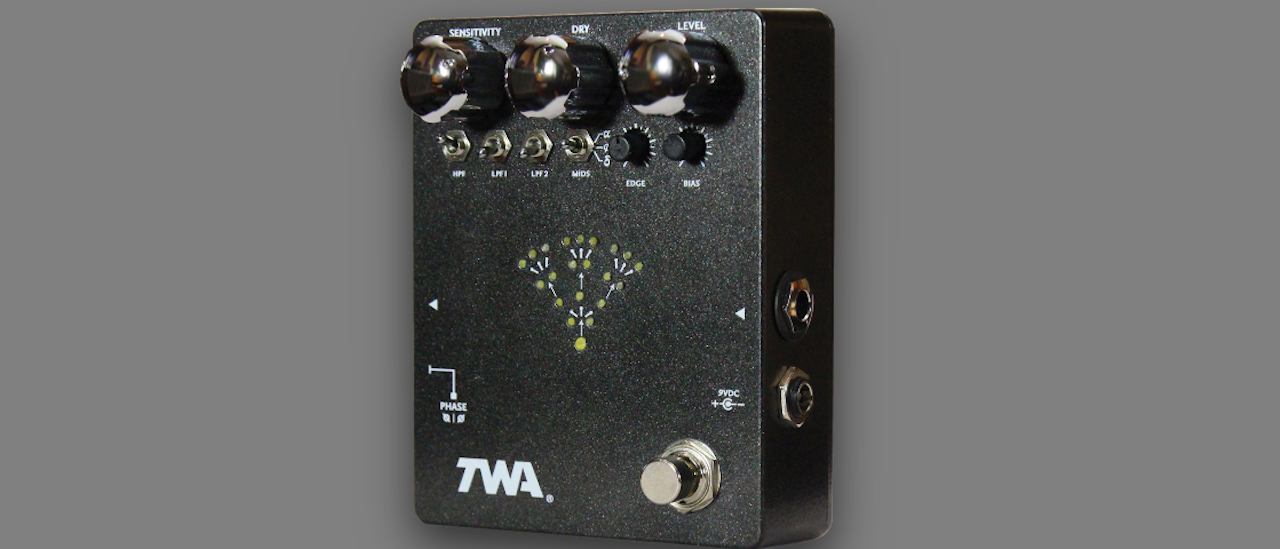GuitarPlayer Verdict
A very tweakable octave fuzz that puts myriad tonal options at your fingertips: modern, but with a vintage soul, this organic and natural-sounding pedal is well deserving of a spot on any fuzz fanatic’s pedalboard
Pros
- +
A unique octave fuzz with inspiring tones
Cons
- -
None
You can trust Guitar Player.
The early ’70s Maestro Bass Brassmaster is the inspiration for Totally Wycked Audio’s new Krytical Mass KM-01 Reactive Octave Fuzz.
Originally designed in 2008, it was shelved for 15 years for reasons that included founder Kevin Bolembach’s obsession with nailing the sound of the original Maestro. The wait seems to have been worth it, because the Krytical Mass is a great-sounding fuzz that’s more straightforward than the TWA prototype that engineer Robert Derby developed.
That said, the KM-01 is still a featuresome device with knobs for sensitivity, dry and level; a pair of mini pots for edge (high-frequency rolloff) and bias; and four powerful mini-toggle switches: HPF activates a high-pass filter; LPF 1 activates a low-pass filter situated post clipping diodes to add low-end to the fuzz; LPF-2 is another low-pass filter located after a twin-T notch filter to affect overall tonality; and Mids is a three-position switch that cuts midrange at specific frequencies in the up and down positions (center is off).
A trimpot adjusts the Q, or sharpness, of those frequencies, which are in the 1-to-8kHz range.
A recessed phase switch on the side of the die-cast housing changes the internal transformer’s wiring from positive to negative for more or less low end, respectively.
The display, which TWA says is based on a scientific illustration of an atomic critical-mass reaction, comprises 21 white and yellow LEDs that can be set to cycle via an internal switch (an adjacent trimpot varies the rate) when the effect is active. It can also be set so all the LEDs shine brightly when it’s active, and dimmer when it’s bypassed.

Tested through a Fender Deluxe Reverb and a Marshall JTM 50, and using a Guild Kim Thayil Polara and a Fender Vintera II Telecaster, the KM-01 offers lots of ways to dial in sounds and is indeed reactive.
All the latest guitar news, interviews, lessons, reviews, deals and more, direct to your inbox!
The sensitivity control adjusts the fuzz intensity and is responsive to picking dynamics and guitar volume settings, while the dry knob works like a blend control to vary the depth of the effect. Turn it left for more octave-fuzz color and right for thicker, rounder grind. The level control adjusts the final output, and there’s plenty of boost on tap.
The switches provide abundant control over how you shape tones, and with HPF up, LPF-1 and LPF-2 down, and Mids up, the Krytical Mass proved a formidable fuzz that’s aggressive and tight, yet surprisingly warm and not at all harsh.
The cool octave-up tonality is more present with the LPF-1 switch on (down), and that sound is shadowed by a subtle low octave that combines to give the KM-01 a voice that’s woolier and less shrieky than a classic Octavia.
Background modulation is mainly noticeable on sustained notes. It adds to the fun and makes things all the more enticing as you start working the feedback envelope at sizable volume.
The KM-01 sounds great with humbuckers and single-coils, and the edge control is useful for taming highs if you want a smoother fuzz tone. The bias pot is another tonal feature. It adjusts voltage to the transistors before the clipping diodes, allowing the fuzz to sound softer/cleaner or more distorted. The sweet spot, where the harmonic content sounded juiciest, was around 11 o’ clock, and that’s where it stayed.
While it’s a very tweakable octave fuzz that puts myriad tonal options at your fingertips, at its core the Krytical Mass is an organic and natural-sounding pedal that can give the feel of playing something from ages ago, when designers were excited about taking transistor distortion in new directions. In that sense, the KM-01 is modern, but with a vintage soul, and well deserving of a spot on any fuzz fanatic’s pedalboard.
Specifications
- CONTROLS Sensitivity, dry, level. Mini pots: Edge and bias. Switches: HPF (activates high-pass filter), LPF 1 (activates low-pass filter post clipping diodes to add low-end to the fuzz), LPF-2 (low-pass filter post twin-T filter, alters overall tonality of the the fuzz), mids (3-position switch cuts mids at specific frequencies in the up and down positions; accompanying trimpot adjusts Q or sharpness of the midrange frequencies). Phase switch on the side changes wiring of internal transformer from positive to negative for more or less low end
- I/O Input, output, 9VDC power jack (adapter not included)
- FOOT SWITCH Mechanical on/off with true bypass
- EXTRAS Two internal trimpots and one slider switch. 21-segment LED display with two different visual options
- SIZE 5.5” x 3.5” x 2” (DxWxH)
- WEIGHT 1 lb
- BUILT USA
Visit Godlyke for more information

Art Thompson is Senior Editor of Guitar Player magazine. He has authored stories with numerous guitar greats including B.B. King, Prince and Scotty Moore and interviewed gear innovators such as Paul Reed Smith, Randall Smith and Gary Kramer. He also wrote the first book on vintage effects pedals, Stompbox. Art's busy performance schedule with three stylistically diverse groups provides ample opportunity to test-drive new guitars, amps and effects, many of which are featured in the pages of GP.

